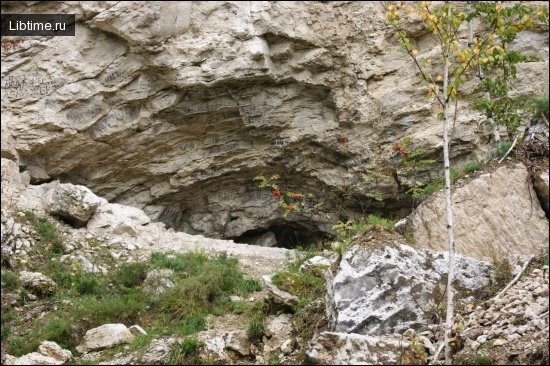Baikal caves
The Baikal-Stanova speleological country, covering the Baikal region, Transbaikalia, Stanovaya Ridge and Dzhugdzhur Ridge, is subdivided into several speleological areas, karst caves are most widespread in the Baikal, Transbaikal and Dzhugdzhur areas. 
The most famous among them is the cave of the Institute of Geography of Siberia, relatively recently discovered by Irkutsk speleologists. The cave is 870 meters long and is located in the western foothills of the Primorsky Ridge in the Angi River basin. It was formed in dislocated marbleized limestone along tectonic and lithogenetic fractures.
The entrance to the cave is at the bottom of a karst sinkhole. The cave is a system of passages and grottoes confined to two hypsometric levels, the difference in height between which reaches 8-14 meters.
The largest grotto, the Central Grotto, is 90 m long and 20 m wide. Nate formations are represented by stalactites, stalagmites and draperies. The stalagmite in the Metropolitan passage is about 3 m high and 4.9 m in diameter.
Firn ice and ice stalagmites were observed in the near part of the cave. The air temperature is 4°, humidity 76-88%. Solitary specimens of man-eaters, such as the mustached noctuid and the northern pipistrelle, were found.
Among the karst caves of Baikal the Lurgikanskaya and Soktuyskaya caves in the Olekmo-Shilka province stand out.
The Lurgikanskayacave is located on the left bank of the Lurgikan River (a tributary of the Shilka River). It was formed in limestones composing a low rise. The cave consists of two large grottoes. One of them is 120 meters long, the other one is 60 meters long. The grottoes are 25 m wide and 15 m high. The floor of the cave is covered with stone blocks. Ice formations appear at the entrance to the cave in winter.
Soktui Cave, located in the northern spurs of the Argun Mountains, 16 km south of the village of Soktui Milozan, was formed in marbleized limestone. The cave is represented by five grottoes connected by narrow passages. The length of the grottoes reaches 22 meters and the height is 16 meters. The floor in many places is covered with large blocks of rock.
The cave is characterized by relative dryness. Its total length is 130 m. Six karst caves have been described in the Dzhugdzhur speleological area. The largest of them is Abogydje, located on the left bank of the Mai River in Cambrian limestone.
It is represented by five grottoes located at different heights and connected by low passages. Its floor and ceiling are decorated with ice stalactites and stalagmites. There are three lakes in the cave, one of which is ice-free.
Far Eastern speleological country is located in the extreme southeast of the Soviet Union and adds to the list of Baikal caves. Within its boundaries there are two regions: Priamurskaya and Primorskaya.
In the Priamurian speleological area underground karst cavities are especially widely developed in the Khingan-Bureya province, where 32 caves are described, including the Ice Cave (120 m long) and the Diturskaya Mine (75 m deep).
The Primorsky region is subdivided into two speleological provinces: North-Sikhote-Alin and South-Sikhote-Alin, the border between which runs along the rivers Bikan and Nakhtahe.
About 10 small karst caves have been described in the North Sikhote-Alin province, occupying the Northern Primorye, which are located south of the town of Vyazemsky and in the basin of the Dolmi River (a right tributary of the Matai River).
Karst caves are quite widespread in the South Sikhote-Alin speleological province. At present about 70 caves and natural mines have been explored here.
The largest of them are Primorskaya (Primorsky Velikan, length 800 m), Spasskaya (760 m), Mokrushinskaya (150 m) and Priiskovaya (120 m). Of particular interest is the Belaya mine, 100 m deep, located near Olga Bay. As we can see, Baikal's caves are quite widespread and diverse.


